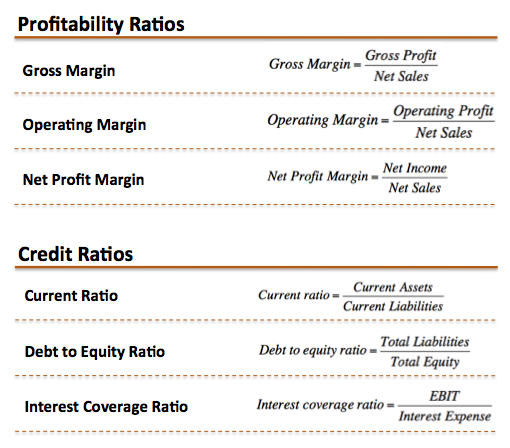Financial Ratios
Post on: 9 Июль, 2015 No Comment

Financial ratios are used to provide a quick assessment of potential financial difficulties and dangers. Ratios provide you with a unique perspective and insight into the business. If a financial ratio identifies a potential problem, further investigation is needed to determine if a problem exists and how to correct it. Although there are often specific benchmarks attached to ratios to indicate when there is cause for concern, ratios should also be thought of as a continuum from weak to strong with the stronger the ratio the better. Ratios can identify problems by the size of the ratio but also by the direction of the ratio over time.
Liquidity Ratios
Current Ratio — A firms total current assets are divided by its total current liabilities. It shows the ability of a firm to meets its current liabilities with current assets.
Quick Ratio — A firms cash or near cash current assets divided by its total current liabilities. It shows the ability of a firm to quickly meet its current liabilities.
Net Working Capital Ratio — A firms current assets less its current liabilities divided by its total assets. It shows the amount of additional funds available for financing operations in relationship to the size of the business.
Asset Management Ratios
Days Sales Outstanding — A firms accounts receivables divided by its average daily sales. It shows the average length of time a firm must wait after making a sale before it receives payment.
Fixed Asset Turnover Ratio — A firms total sales divided by its net fixed assets. It is a measure of how efficiently a firm uses its plant and equipment.
Inventory Turnover Ratio — A firms total sales divided by its inventories. It shows the number of times a firms inventories are sold-out and need to be restocked during the year.
Total Assets Turnover Ratio — A firms total sales divided by its total assets. It is a measure of how efficiently a firm uses its assets.
Debt Management Ratios
Debt to Asset Ratio — A firms total debt divided by its total assets. It is a measure of how much of the firm is debt financed.
Debt Coverage Ratio or Debt Service Coverage Ratio (DSCR) — A firms cash available for debt service divided by the cash needed for debt service. It is a measure of a firms ability to service its debt obligations.
Times Interest Earned Ratio (TIE) — A firms earnings before interest and taxes (EBIT) divided by its interest charges. It shows a firms ability to meet its interest payments. It is also called the interest coverage ratio.
Earnings Before Interest, Taxes, Depreciation, and Amortization (EBITDA)Coverage Ratio — A firms cash flow available to meet fixed financial charges divided by the firms fixed financial charges. It shows the ability of a firm to meet its fixed financial charges.
Profitability Ratios
Profit Margin on Sales — A firms net income divided by its sales. It shows the ability of sales to generate net income.
Basic Earning Power (BEP) — A firms earnings before interest and taxes (EBIT) divided by its total assets. It shows the earning ability of a firms assets before the influence of taxes and interest (leverage).
Return on Total Assets (ROA) — A firms net income divided by its total assets (both debt and equity supported assets). It shows the ability of the firms assets to generate net income. Interest expense is added back to net income because interest is a form of return on debt-financed assets.
Return on Equity (ROE) — A firms net income divided by its equity. It shows the ability of the firms equity to generate profits.
Return on Investment (ROI) — A firms net income divided by the owners original investment in the firm.
Earnings per Share — A firms net income per share of stock.
Market Value Ratios
Price/Earnings Ratio (P/E) — The price per share of a firm is divided by its earnings per share. It shows the price investors are willing to pay per dollar of the firms earnings.
Price/Cash Flow Ratio — The price per share of a firm divided by its cash flow per share. It shows the price investors are willing to pay per dollar of net cash flow of the firm.
Market-to-book value (M/B) — The market value of a firm is divided by its book value.
Don Hofstrand. retired extension value added agriculture specialist, agdm@iastate.edu














